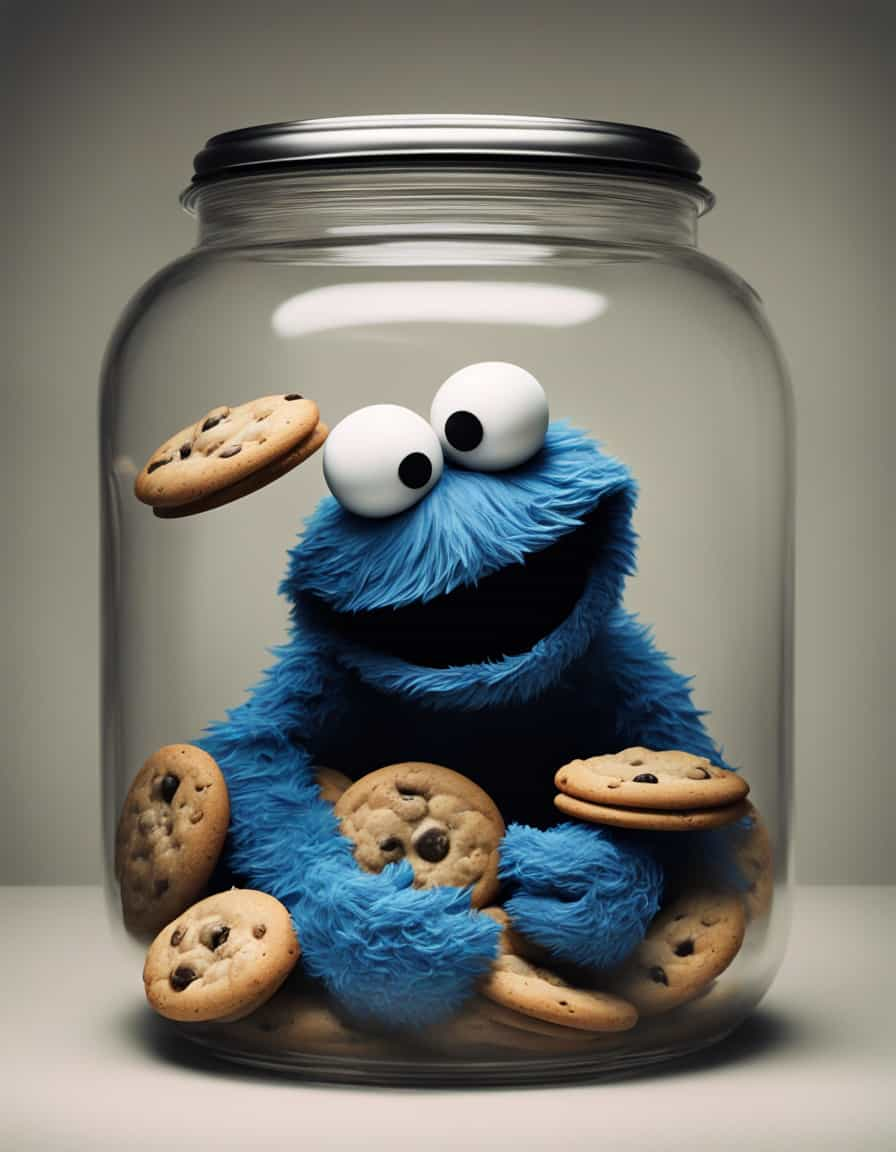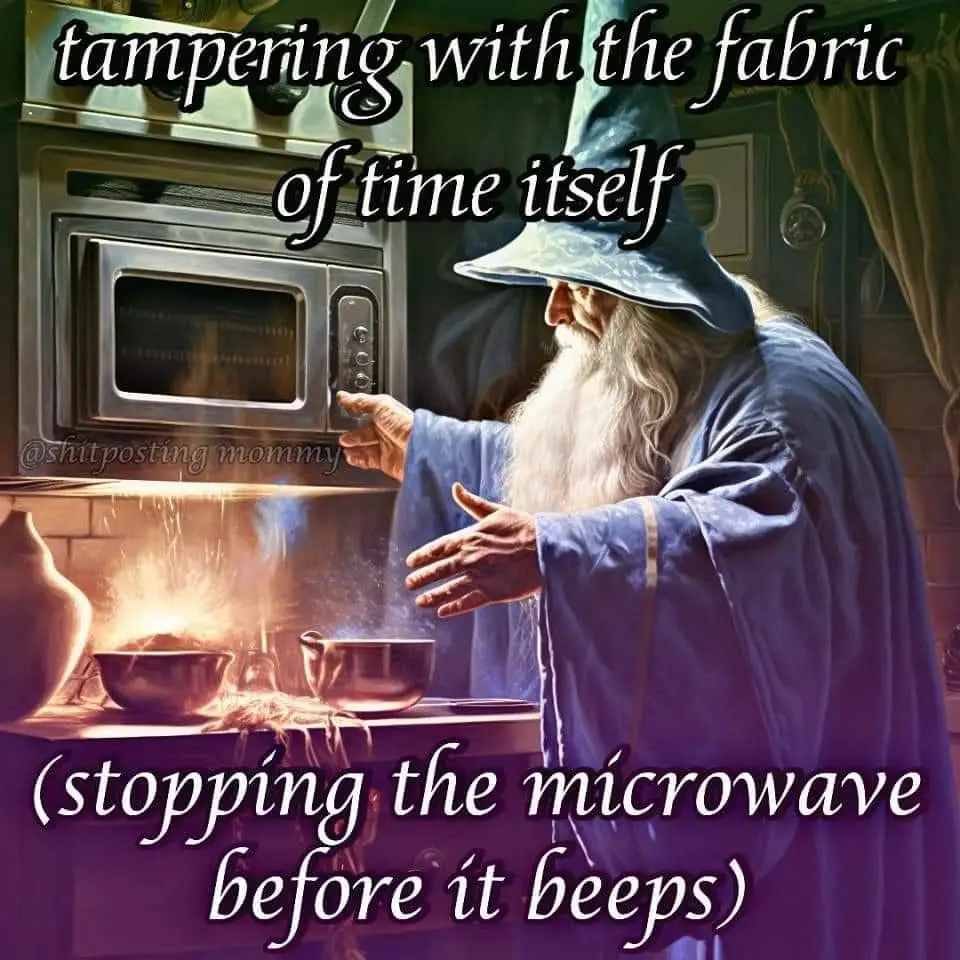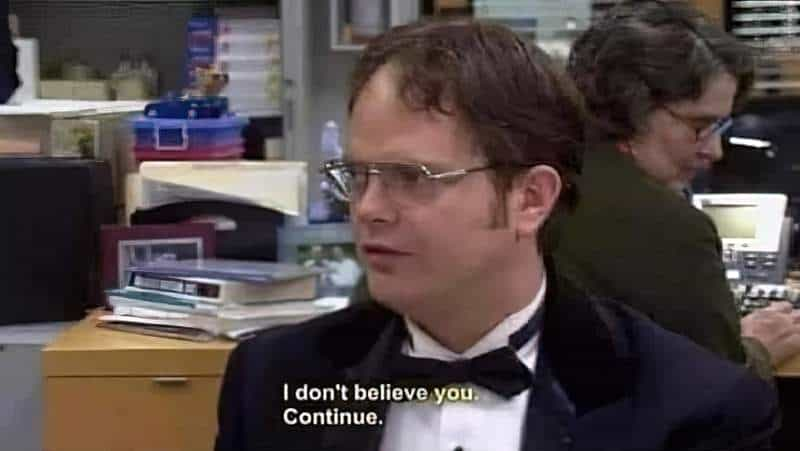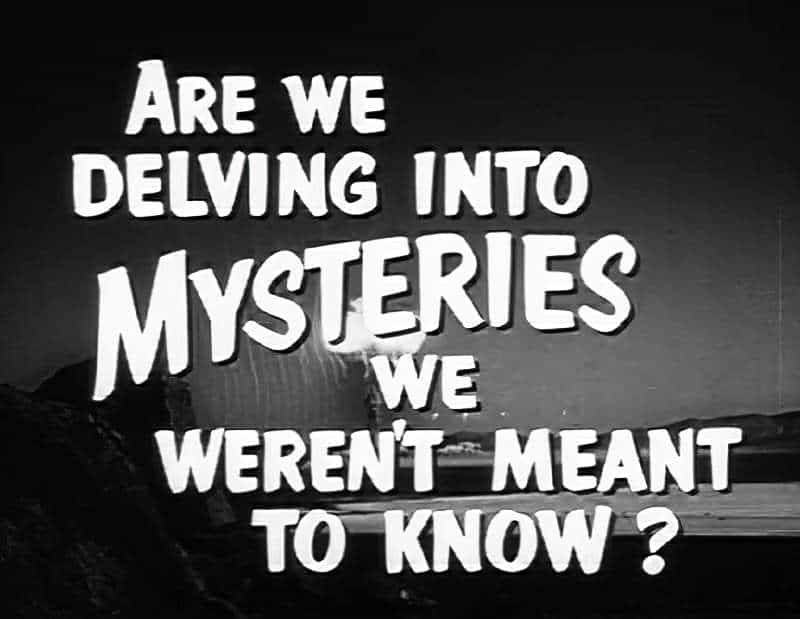What do you imagine of when you think “cookie jar”? Grandmothers? Buttery, sweet snacks? Cosy kitchens? Sesame Street?
Best known for his horror and supernatural fantasy, you may not think “Stephen King” when you think of cookies, but in the mid 2010s Stephen King published a short story called “Cookie Jar”, available online. You will also find it in The Bazaar of Bad Dreams, published 2015.

WHERE TO LISTEN
You may be able to unearth the BBC dramatization of this short story somewhere e.g. on YouTube. “Cookie Jar” was broadcast October 2016.
Stephen King famously said in his craft book On Writing that writers should strike out 10% of what they write before submitting it for publication.
In the spring of my senior year at Lisbon High—1966, this would have been—I got a scribbled comment that changed the way I rewrote my fiction once and forever. Jotted below the machine-generated signature of the editor was this mot: “Not bad, but PUFFY. You need to revise for length. Formula: 2nd Draft = 1st Draft – 10%. Good luck.”
I wish I could remember who wrote that note—Algis Budrys*, perhaps. Whoever it was did me a hell of a favor. I copied the formula out on a piece of shirt-cardboard and taped it to the wall beside my typewriter. Good things started to happen for me shortly thereafter.
Stephen King, On Writing
*Algis Budrys was a Lithuanian-American science fiction author, editor, and critic.
Some have suggested that, for Stephen King, culling percentage should be more like 30% than 10. But because King is such a mega-selling author, editors would require much chutzpah before suggesting The King of Horror edit his submissions down. Fans will buy his work anyway, no matter the length.
However you feel about that, don’t try reading along to this story while listening to the radio adaptation because it’s been abridged. (In my opinion, the radio edit is better for it.)
THE FAIRYTALE STRUCTURE OF “COOKIE JAR”
“I was thinking of how her place smelled. How good it smelled.”
“Like cookies,” Rhett said. “That’s how it always smelled. It was like a fairy-tale house that way, wasn’t it?”
“Cookie Jar”
Check out The Plot Points of Every Single Fairy Tale (according to Vladimir Propp).
- Kid goes to see his great-granddad. [ABSENTATION = family member leaves home.]
- Great-granddad tells kid that there’s a magic cookie jar that refills itself, and also lets you see another universe in the bottom. Remember reading The Magic Porridge Pot? Here we have a receptacle whose contents can fulfil your desires, but it is also dangerous in the wrong hands.
- Kid starts to believe the story and gets excited. Kind of like Jack with his magic beans , right? The story-within-a-story:
- So great-granddad also tells kid that his grandmother having access to the magic portal drove her crazy.
- The mother dies. [This creates a LACK = psychic wound/ghost for the sons, who no longer have a loving mother to take care of them.]
- From the house, each of the three sons takes an item to remember their mother. [MAGICAL AID]
- Young Rhett goes off to war. [He is a SEEKER = one of the main types of fairy tale heroes — the other type is the Victim-hero. He is TRANSFERED TO ANOTHER KINGDOM and engages in BATTLE.]
- Rhett’s brother Jack is killed. [A LAMENT = the family believes he is dead/murdered. ‘Jack’ is a stock character in a collection of English folk tales.]
- Rhett manages to survive the war despite the odds, perhaps because the inherited wrist watch functions as an apotropaic talisman.
- He realises his mother’s fantasy land was a premonition. She was seeing the horror of her sons at war.
- Just as the wristwatch comes home with him, so too do the terrible memories of war.
- Great-granddad [DONOR = the provider of information] tells kid the cookie jar still exists and where to find it… [LOST TREASURE IS FOUND]
- but warns him not to use it. [INTERDICTION = main character is given a warning]
- Kid leaves. [Kid gets his own ABSENTATION, starting a new cycle of story]
- Great-granddad knows in the back of his mind that the kid will use the cookie jar anyway because kids think they are indestructible. [VIOLATION = in fairy tales interdictions are always broken, that’s just how fairy tales work]
One reader compares this story not to fairytale, but to a Biblical allegory:
It’s like that story in the Christian scriptures about the rich kid who was told to sell all that he had and give it to The Poor. Wealth, even the Aldersons’ level of wealth is a literal obstruction to seeing what’s really going on. But even when you sell everything you have so you can give cookies to The Poor, what happens then? They eat them, which is nice, but you haven’t solved poverty. And you’re still not The Poor because you are the beneficiary of the magic cookie jar, so you’re not going to go hungry and in fact you can forget The Poor again as soon as the jar fills up.
So the Aldersons have a nice American life, they’re metaphorically grabbing the warm tasty cookies and eating them. But Rhett has seen the darkness and desolation – he’s seen what things are like under Red and Black rule. Everybody around him just keeps eating the cookies but more keep reappearing, so everybody ignores what’s underneath them. The only way to even know what’s going on is to dump all the cookies out and make this enormous mess – in our terms that would be going crazy – and then you’re just better informed; you don’t necessarily have a way of fixing things.
Joe in Australia
The same reader also sees an allegory about modern parenting, which perhaps explains the inclusion of the iPhone (which modern parents are so often warned about):
But it’s also an allegory about our lives and the horror that we know is out there, and our decisions to ignore it. Because what are we going to do, anyway, other than make this huge awkward situation and still not be able to deal with things? And our kids need our care and attention; we don’t have a right to ignore them just so we can obsess over what’s going on in Syria or Darfur or wherever. Even Rhett’s mom knew that. The cookie jar, we’re living in it.
Joe in Australia
DISCUSSION QUESTIONS
- For this piece, Stephen King utilised a ‘story-within-a-story’ technique. What is the story within a story? How is this framing more engaging than simply writing the tale of an old man, without the grandson?
- How else does Stephen King persuade readers that we are hearing something ‘true’? (Look for writing techniques.)
- In what era was the great-grandfather a child?
- Near the beginning of the story, Stephen King introduces the theme of time and how it isn’t necessarily linear, it’s speed unchanging, as people typically experience it. How does he do that?
- King increases our interest when we learn this story has not been told before. How does King explain the fact that the grandfather only decided to tell this story for the first time now?
- Why does the great-grandfather not want the story recorded?
- Why do you think King gives the great-grandmother a mental illness and why does he name the specific illness? (Bipolar disorder.)
- Turns out the mother isn’t ‘crazy’. The cookie jar really is a portal to another time. Off the top of your head, can you name other fantasy portals from stories which exist in and around the home/town?
- How does this fantasy portal work?
- Stephen King has ended this story before the great-grandson locates the cookie jar.
- Do you think the way Stephen King left this story counts as a ‘proper ending’? What does a proper ending look like to you?
- What do you think happens next, after we leave these characters? Has the author given us enough information to keep this narrative going in our heads, should we wish to?
WHAT HAPPENS IN “COOKIE JAR” BY STEPHEN KING
THE WELL-KNOWN GRANDPARENT ASSIGNMENT
A grandson (Dale) interviews his grandfather for a school assignment. This assignment will be familiar with many middle-schoolers: Talk to your oldest relative and find out what life was like when they were your age. Thirteen, that is. After speaking with his great-grandfather, the grandson must write a two-page report. Which frankly, turns a wonderful exercise into a complete drag for any student who isn’t like me, i.e. who loves to write things down (as a way of processing thoughts). I would say (as a former English teacher myself) that only about 10% of any class enjoys the task of writing essays.
So there you go, that’s the real 10% rule, in my opinion.
Stephen King is utilising the story-within-a-story framing. For more on that, look up ‘diegetic levels‘.
INTRODUCING GREAT GRANDPA: BARRETT ALDERSON
The great-grandfather’s name is Barrett, shortened to Rhett, which will put older readers in mind of the character Rhett Butler. For in-between generations like me, even if you don’t know the name, you may recognise this photo:

By alluding to Gone With the Wind, Stephen King has just told us that the great-grandfather was born before 1936 (we can work out he was born c. 1926), and also lampshaded the association between the man in the story and the fictional character who goes by the same name. This serves to remove the association for readers but, more importantly, reinforces verisimilitude, because readers are convinced, subtly, briefly, that while Gone With the Wind is fiction, this short story is not.
When Rhett tells Dale to turn off his iPhone because he “doesn’t want anyone recording this”, readers are primed to forget that, in the act of reading or hearing the story, it has indeed been “recorded”. We are fully immersed.
THE THEME OF TIME
Something that becomes more clear the older you get: Time speeds up. It doesn’t literally speed up of course, it’s just that with more years behind you, every passing year comprises a smaller percentage of your total life. So the years feel like they pass quickly. Childhood seems to last forever, whereas your 70s and 80s go like *that*. Now that the old man realises he has bowel cancer and that his time is limited, he has finally decided to share something he has always kept secret. This increases interest from readers. We all like to feel we’re being let in on a little-known secret. That’s probably the Scarcity Bias at work. (The more difficult it is to acquire an item the more we value it.)
See also: Making Use of Cognitive Biases in Storytelling

TECHNOLOGY CRUCIAL TO THIS STORY
When the grandfather thinks You’ll get across it in no time, kiddo, this is the author gently introducing readers to the theme of time. Basically, Stephen King is using the science fiction/fantasy cookie jar as a metaphor to express how older people experience time differently from the young. For this he’ll also need an old-timey watch, which he juxtaposes with the iPhone — in 2015 few people were wearing wristwatches anymore, and the first Apple Watch only just came out around the same time as this story. As King conceived of “Cookie Jar”, the wristwatch served as an artefact from an earlier time. (I’m guessing Stephen King doesn’t keep fully up-to-date with the latest in Apple news.)
When Rhett says, “Does that thing [the iPhone] record, too?” the thirteen-year-old replies, “Honey, it don’t do windows.”
This construction doesn’t sound like something a typical 2015 13-year-old would say, and baffles me a bit. Perhaps this is King (via the 13-year-old) making a wisecrack about the walled-garden of the Apple OS, and how you can’t run Windows on it. On the other hand, King may simply be referring to a much older concept in which hired maids would negotiate the terms of their contract by specifying what they would and would not be prepared to do. Of course, he might be punning by meaning both. Either way, I don’t buy that a 13-year-old would say such a thing.

The wrist-watch also links into the theme of ‘messed up time’ because the memory of war never leaves a traumatised solider. It’s with him all the time, right there, a reminder on the wrist. In King’s fantasy, the only time the watch stops is when it dips below the rim of the portal of the cookie jar. This suggests a switch from chronos (linear time) to mythos (fairytale time), and surely has something to do with dipping into the subconscious.
THE AUTHOR’S INTERDICTION
“He might have been one of the great ones,” Rhett told Dale. “Probably not, most kids never fulfill their potential, but we’ll never know.”
“Cookie Jar”
THE MAGIC AROUND THE COOKIE JAR
Things from elsewhere inexplicably manifesting as other things in our world is a pretty common trope for Stephen King.
Scattercat
This reader gives the examples of:
- “From a Buick 8”
- “Forza”
- “fornit sum fornus” from “The Flexible Bullet.”
Stephen King never explains why a cookie jar. This annoys some readers:
Okay, what we have here is a story that started with the simple high concept, “what if you had a cookie jar that never ran out.” King has done this before. Some of his better stories started out this way. So far, though, this isn’t one of them.
So we have this cookie jar that never runs out, obviously there is some turn or twist. What’s the downside? King makes it a portal to one of his dystopic alternate realities, similar to about a dozen other stories he’s written. But he does a lazy half-assed job of it. Most glaringly, he doesn’t explain why the portal fills up with cookies when we haven’t dumped it out to look at Otherwhere. There are some obvious hooks there to hang a sentence or two that would make the story more coherent; maybe the cookies appear to shield us from the death fog. Although it would be nice to know why stone pellets don’t do even better. Again, King just didn’t bother. Look Stephen, I can grok the jar of infinite cookies, but if you want to ALSO be a portal to a wacky alternate universe you have to give me SOME reason why these two functions are related. This … is part of storytelling.
Bringer Tom on a message board
Other readers focus more on the magic cookie jar as conveyer of theme:
it’s not about the cookie jar, or the other universe. It’s about this universe, and how we handle our own knowledge of atrocious and dangerous things, and how we learn to live with that knowledge – or don’t. The narrator would rather talk to his grandson about the horrible but remote world at the end of the cookie jar than his own experiences liberating Nazi death camps. Why is that?
Me & My Monkey
To put that another way, Stephen King provides no hermeneutical closure for the magic of the cookie jar. We must simply accept its existence without explanation.

However, he does provide emotional closure. This closure-combo is far more common in lyrical short stories than in genre short stories, so readers unused to the lyrical tradition won’t be fully expecting it. Note that without the emotional closure, this story would have satisfied nobody. Also, King lampshades the obvious question by having the grandson ask Rhett: Where did the cookie jar come from in the first place? Nobody remembers. This in itself is a fable about how we all-too-easily lose access to past lessons if we young people are not given the chance to interact with elders.
THE WITCH MOTHER: moira alderson
In 1927, two years after I was born, she moved out of the house, bag and baggage, and into a little cottage on the other side of town.
“Cookie Jar”
When no-fault divorce wasn’t an option, this is what people did. In this case, we’ve got an example of mad woman in the attic, except she’s been transferred to a cabin in the woods. She’s a witch archetype. Stephen King puts that right on the page.
She’d fly around that place, getting cards or board games or five-hundred-piece Tuco puzzles for the three of us to do. Sometimes she’d crank up her Victrola and try to teach us how to dance the Charleston, and when we wouldn’t, she’d do it by herself, with her shadow on the wall. She’d […] show us how to do magic tricks like the Disappearing Coin and the Floating Handkerchief.
[…]
“…she was a good witch instead of a bad one.”
“Cookie Jar”
It’s worth mentioning that Stephen King’s non-rounded female characters fit into a handful of archetypes; the witch is one of them. Another is Damsel in Distress — he likes the Gothic ones.
I pictured Moira Alderson as Winona Ryder, so the whole thing read as Joyce Byers fan fiction to me.
EXISTENZ IS PAUSED
Because this is a contemporary tale, witchy women are considered ‘crazy’, or mentally ill, to put it more kindly.
Crazy is safer when it goes unrecorded.
“Cookie Jar”
So that comes into the story, bringing the ancient witch into the present. This may also explain the ending, in which the great-great-grandson will be finding the jar:
The cookie jar is some kind of inherited eccentricity or mental disorder and he’s just passed it to a new generation after having skipped a few.
palindromeisnotapalindrome
Near the end, King’s narrator points out that twice in the 20th century ‘the world’ went ‘insane’. The ‘craziness’ of the mother is really no more crazy than the political situation and the war — the mother only seemed insane because she’d seen the collective insanity coming. A Cassandra.
THE GOBBITS
For as long as human history exists, we know that people have been populating every nook and cranny with fairies. These days, Western audiences are inclined to think of Tinkerbell-like creatures when we think of fairies, but fairies can exist at all points on a moral spectrum, and are quite often evil.
Every big event has its own version. Roald Dahl wrote of ‘gremlins’, a fairy which came about during WW2. Gremlins were believed by members of the Royal Air Force to tamper with engines, causing accidents.
Perhaps when Stephen King came up with the ‘gobbit’ he was thinking of something between a gremlin and a hobbit?
In any case, the gobbits in this story symbolise the various horrors of war, especially as experienced on the battlefield at Buchenwald and Dachau.
THE ENDING OF “COOKIE JAR”
Stephen King has left us with what some have called a ‘never-ending story’. (Other people call this a Harlan Ellison style finish.)
Here’s what one Stephen King fan has to say:
An ending is something which concludes the story, making it unnecessary to wonder what happens next. Good nukes Evil in Las Vegas is an ending. Coming back to burn down ‘Salem’s Lot is an ending. Flying off in the Tommyknockers’ saucer is an ending. The Mangler ripping itself from its foundation is an ending. Christine seems to have one ending when Christine is cubed, but in an epilogue we get a quite different one, his unending fury. It happens just past the last page but we know exactly what the ending of Pet Sematary is. In It the writer uses the last of the magic to save his wife. Those are endings.
This story doesn’t have an ending. It actually feels like the prologue to a much longer story which might explore what Dale does with his gift, but as it ends neither Rhett nor we have any idea what will happen next; this is presented as kind of a metaphor about how things move between generations, but it’s not an ending.
If the Mcguffin was broken, or Rhett decided not to pass it on and let it be lost, or Rhett passes it on with an understanding that what he is doing is evil or dangerous but he has some reason for that, those would be endings. I think the problem with this story is that Stephen King doesn’t know how it ends, or even exactly why the [charmingly small miracle] masks the [large dangerous miracle]. He just described the image of these miracles being revealed, and didn’t know what to do with them. … At least he didn’t spend 4,000 pages failing to figure it out.
[…]
It’s not that the ending tells you exactly what will happen next, it’s that it makes it unnecessary to wonder. The OP is not a story with a conclusion; it is the beginning of a story King hasn’t bothered to tell. As I said upthread there were ways King could have actually concluded the story in the length of the OP, but he chose not to do that, probably because he felt those conclusions were too cheap and easy. But like every fantasy book which ends with “continued in part 3” or leaves the most important plot elements open-ended so that you will buy the sequel, this is a story that doesn’t have an ending.
Bringer Tom on a message board
Note that the wrapper story and the inside-story (of the grandfather) are two different stories, and each ends differently. The great-grandfather’s life story is complete. Dale’s story ends at the interdiction phase of this modern fairytale. It’s up to us to fill in the rest.
My takeaway: As the Split Enz song cautions us, history always repeats.
